This was published 1 year ago
What do James Bond and Barbie have in common? It’s all in the brand
Don’t expect to see 007 driving a Toyota... when it comes to product placement, nothing is accidental.
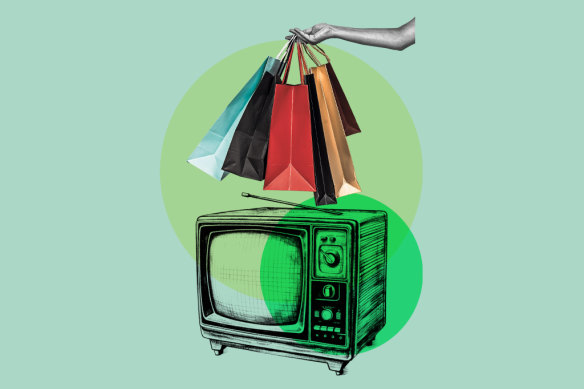
Credit: Marija Ercegovac
In Steven Spielberg’s 1982 film classic E.T. the Extra Terrestrial, Elliott (Henry Thomas) lures the film’s alien star out of the woods by setting down a trail of Reese’s Pieces, an American peanut butter candy owned by the confectionery giant Hershey. It is not the first example in film history of product placement, but for many of us it is our earliest memory of it.
Hershey only secured the placement after Mars Wrigley, which owned M&Ms, turned it down. And no money changed hands, technically. Hershey offered to spend $1US million in advertising around the film, and got placement as a gift with purchase. It was worth every cent; sales of Reese’s Pieces shot up 65 per cent within weeks of the film’s premiere.
E.T.‘s Reese’s Pieces, Tom Hanks’ desert island companion Wilson – a Wilson volleyball – in Cast Away and Tom Cruise’s transformation of Ray-Ban Wayfarers (in Risky Business) and Ray-Ban Aviators (in Top Gun) from eyewear to cultural icons are the tips of a $US23 billion ($A35 billion) global corporate iceberg that reaches into film, television (scripted and reality) and, now, social media.
So, what’s product placement worth to a brand? And why don’t they just go buy an ad? In one sense, it solves the great riddle of publicity versus advertising. From the perspective of the brand, publicity has the bonus of credibility but comes with zero control, while advertising retains control but lacks the credibility of independent editorial.
“The question is, what is that happy medium? How can [the brand] control this by paying for it, without making it appear obviously that they are paying for it?” asks Dr Siva Balasubramanian, associate dean of the Stuart School of Business at the Illinois Institute of Technology. The answer, of course, is product placement.
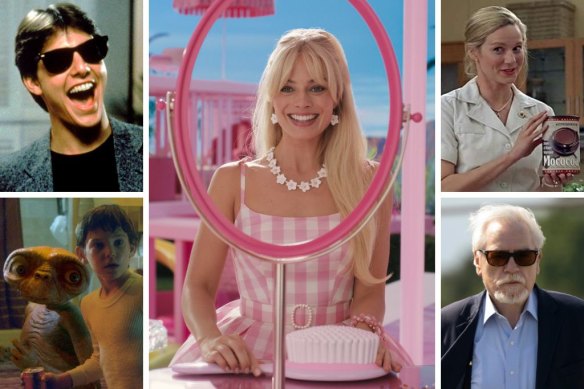
Clockwise from main: Margot Robbie in the ultimate example of product placement; Laura Linney in The Truman Show; Brian Cox in Persol sunglasses; snack time with E.T.; Tom Cruise wears Ray-Bans in Risky Business.
What is more, Balasubramanian says, consumers now come to product placement with a great enough understanding that they are not only comfortable with it, they engage positively with it. “Consumers love it, across cultures, across countries,” he says.
Balasubramanian, an expert on brand marketing and product placement, says research reveals the US market has the highest level of consumer positivity towards product placement. “That’s where Hollywood is, so that should not be any surprise,” he notes. “However, [looking at] Europe and Asia, it is positive and growing in positivity.”
The history of product placement goes back long before the moment E.T. crash-landed in Elliott’s backyard. The 1920 silent short film The Garage, starring Buster Keaton and Roscoe “Fatty” Arbuckle, contained scenes featuring the logos of Zerolene oil and Red Crown Gasoline. Even the film that won the first Oscar for best picture, 1927’s Wings, contained a plug for Hershey chocolate.
It even gave rise to its own genre: the soap opera, daily TV dramas built around soap powder ads. One of America’s biggest producers of soap, Procter & Gamble, went so far as to open its own production arm, making shows including Another World (1964-1999) and Guiding Light (1952-2009) “in house”. (The last P&G-produced show, As the World Turns, left the airwaves in 2010.)
That transaction came full circle in Peter Weir’s The Truman Show (1998) in a scene in which Meryl Burbank (Laura Linney) offered her on-screen husband Truman (Jim Carrey) a glass of Mococoa. “All natural cocoa beans from the upper slopes of Mount Nicaragua,” she smiled, for the viewers. Truman, unaware that he has been living 24/7 on television but beginning to have doubts, responds: “What the hell are you talking about? Who are you talking to?”
Product placement is now a very real part of film financing, though it varies from film to film. The 2013 reboot of Superman contained more than 100 products, raking in $US170 million in revenue (against the film’s $US225 million budget) before the studio had sold a single ticket. As balance sheets go, that is hard to top.
Subway featured in Happy Gilmore (1996), Google in The Internship (2013), eBay in Ralph Breaks the Internet (2018) and Twinkies in Zombieland (2019). For a time, the holy grail was getting your product a starring role, such as Volkswagen’s Beetle car in The Love Bug (1968), or in the title, such as America’s White Castle burgers in Harold & Kumar Go to White Castle (2004).
In Stanley Kubrick’s horror movie The Shining (1980) the label of a can of Heinz beans is turned towards the camera. And in Jurassic Park (1993) a Barbasol shaving cream can is used by Dennis Nedry (Wayne Knight) to smuggle dinosaur embryos off Isla Nublar. (Curious footnote: Barbasol did not pay for the placement, but its parent company Perio hailed it “one of the most recognised brand integrations of all time”.)

Lewis Dodgson (Cameron Thor) supplies Dennis Nedry (Wayne Knight) with a modified can of Barbasol shaving cream in Jurassis Park.
Apple, in contrast, keeps tight control over its products. They don’t pay for placement, though they do provide hardware if needed, with one notable exception: its devices can’t be used by the bad guys. “The Apple product [can be] shown only in the best light,” warns the company’s brand guidelines.
Wayne’s World (1992), about two rock music fans from Indiana who host a community TV show, took it to a meta level. “Contract or no, I will not bow to any sponsor,” Wayne (Mike Myers) says, while eating a Pizza Hut pizza and Doritos corn chips. “It’s like people only do things when they get paid,” replies Garth (Dana Carvey), wearing Reebok attire from head to toe. (Mountain Dew and Pepsi also feature in the scene.)

Wayne (Mike Myers) promotes Pizza Hut in a scene from Wayne’s World.
There were Nike shoes in Forrest Gump (1994), Marlboro cigarettes in Men in Black (1997), Duracell batteries in The Matrix (1999) Prada, Christian Louboutin, Gucci and Louis Vuitton in Sex and the City (2008) and Adidas, Fresca soda, Subaru and Sony in Amazon’s The Boys (2019-present). We could do this all day. Really.
The apex predator of the product placement ecosystem, however, is the brand-as-whole-film enterprise, such as The Lego Movie (2014) or Barbie (2023). When The Lego Movie premiered, sales of the products shot up 25 per cent. Barbie is also surfing a sales boom on top of the $US1 billion the doll – with her 35 different skin tones and 94 hairstyles – already turns over annually.
Getting it right matters, says Balasubramanian. Which means Aston Martin might be a natural fit for James Bond, but audiences are likely to baulk if he turns up driving a Toyota. “What makes some product placements more appropriate and some less [is the] fusion of the brand personality, the character’s personality, the actor’s personality, or the movie’s story,” he says.
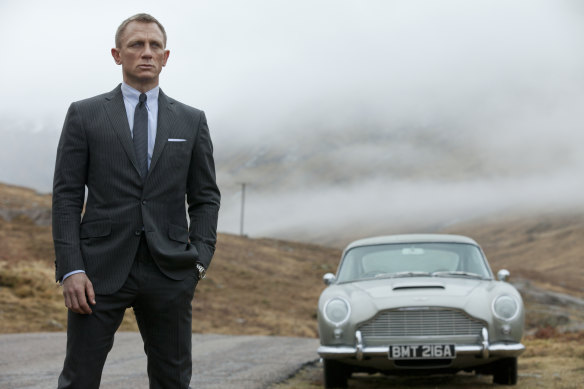
James Bond (Daniel Craig) and his trusty car (not a Toyota).Credit: AP
And as with traditional PR, even bad placement is good placement. American Airlines paid their way into Home Alone and Home Alone 2: Lost in New York, even though in the first film, delays and flight cancellations stop the McCallisters from returning to save son Kevin, and in the second, Kevin boards a New York-bound plane without a boarding pass.
Then there was the Adam Sandler comedy Jack and Jill (2011) in which Oscar-winner Al Pacino performs a Dunkin’ Donuts jingle for the fictitious Duncaccino. “You want creamy goodness, I’m your friend, say hello to my chocolate blend,” he sings.
What works and what does not is a precise science, Balasubramanian says. “For exactly those reasons, you would say certain brands just don’t fit in a particular situation. There is a lot of research underlying that. Brands do their homework.”
Interestingly, product placement is less prevalent in Australian content. Andy Ryan, the director of drama at Nine (owner of this masthead), says Australian audiences would have difficulty swallowing brand placements in local drama.
“Audiences [in Australia] expect a separation between drama and advertising, and they’d be rightly cynical about obvious product placement,” Ryan says. “On a commercial level, advertisers need certainty about prominence and reach, and we simply can’t guarantee that from a drama. That’s the big difference between product placement in dramas versus reality shows.”
Some Australian dramas borrow hardware as props – typically cars, computers and phones, Ryan says – but those deals come with no strings attached. More developed brand placement naturally suits reality TV, Ryan says. “The Block is a great example of how brand integration feels organic and part of the fabric of the show.”
On The Block, you will find a2 Milk, Domain, Ford, McCafé, Mitre 10, Simonds Homes and Suncorp. Switch channels to MasterChef Australia for Coles, Harvey Norman, Devondale, Cobram Estate, Swisse Wellness, Qantas, SPC and Mazda. And on Australian Survivor you will find KFC, Isuzu, Set For Life, and TK Maxx.
In the wake of reality TV came influencers, either personalities native to social media, or high-profile reality TV personalities with big social audiences. That gave rise to brand partnerships such as Michael Jordan and Nike, Kylie Jenner and Puma, Justin Bieber and Calvin Klein, or Kendall Jenner and Pepsi. Those deals live in a billion-dollar microeconomy of their own.
And as with conventional product placement, it does not always work. Kendall Jenner famously pocketed $US275,000 to promote the disastrous Fyre Festival, the 2017 music festival on Great Exuma in the Bahamas, which ended in a logistical, financial and legal wrangle. In the court case that followed, Jenner denied liability but settled for $US90,000.
The rise of product/influencer integrations is predicated on “the authenticity and the degree of recognition that they have in their own niche,” Balasubramanian says. “Call it expertise, familiarity or trustworthiness, whatever it is, there is an existing [factor] there, mostly positive, that audiences crave because they have a prior liking of the influencer.”
Those factors – familiarity and trust – “coalesce around this notion called authenticity,” Balasubramanian adds. “Authenticity means the audience is aware the brand wants to persuade them, but they do not want any semblance of artificiality in the persuasion attempt.”
Younger audiences, who are more engaged on social media platforms, are not only less resistant to brand-integrated content, they anticipate and embrace it, says Alex Reid, the founder of Amplify, an Australian-based social media production company that creates branded content on social platforms for a suite of companies including Samsung, Tinder, Flybuys and Universal Pictures.
But such spaces are complex to navigate, forcing brands to learn a new language for interaction. “Some brands want to be on TikTok, for example, but they don’t know what to say,” Reid says. “We treat influencers like mastheads, so the audience a creator builds is a very loyal audience, and the audience pick up anything that is unauthentic to them.”
Critically, Reid says, TikTok and Instagram audiences are difficult to capture in conventional media spaces, even via streaming television. A typical user of social platforms is watching almost 90 minutes a day, spread across five to 10 viewing segments, “which is, in other words, like watching a feature film every day on the platform,” Reid says. “Within that, brands have the opportunity to integrate their message, but if the message does not have a natural place, the audience will rebuke it.”
Whatever you think of product placement, it is everywhere – sometimes where you least expect it. You can find it in music videos, such as Nike in Drake’s Headlines, Rolls-Royce and Mercedes-Benz in Post Malone’s White Iverson, Beats by Dr Dre and EOS Lip Balm in Miley Cyrus’ We Can’t Stop, and Blackberry, Fiat, Tous jewellery and Crown Royal whisky in Jennifer Lopez’s Papi.
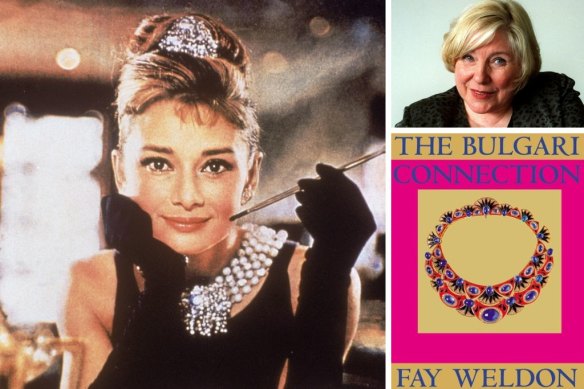
Truman Capote’s Breakfast at Tiffany’s inspired a hit film starring Audrey Hepburn, but Fay Weldon’s The Bulgari Connection was not quite so warmly received.
You can even find it in books. Well, at least one. Tiffany may not have sponsored Truman Capote’s Breakfast at Tiffany’s, but jewellery brand Bulgari did pay Faye Weldon to write The Bulgari Connection (2001). It did not go down well in literary circles. Jason Epstein, the former editorial director of Random House, told salon.com it was “a revolting idea”.
So how far is too far? Disney has transformed two theme park rides – Pirates of the Caribbean and Haunted Mansion – into successful film franchises. Even a quality drama such as Succession is for sale: Persol sunglasses (on Logan), Jacques Marie Mage sunglasses (on Kendall), Land Rover, Cadillac and Mercedes-Benz, Dell and Samsung and, in Kendall’s bathroom, Augustinus Bader’s The Cream. Not all of these are paid spots; some are simply the result of shrewd research by the show’s art department into which brands the world’s billionaires prefer to use.
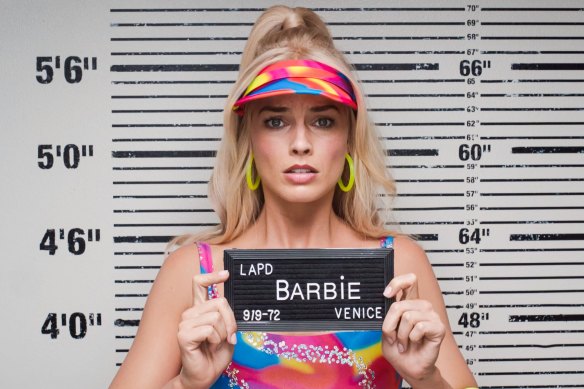
Guilty as charged: the Barbie movie is brand overload.
And then there is Barbie, the fashion doll who remains the star product for $US7.6 billion dollar toy giant Mattel. The Barbie movie – an inexplicable merger of commerce and art – has already rung up a global box office of more than $US1billion.
The film, Balasubramanian says, is not so much “peak product placement” but a demonstration of the complete “consumer acceptance of the product placement concept”.
“It’s gone from acceptance to celebration. They are much more than just OK with it, they actually like the integration, they are celebrating it. The industry has gotten … better at this, where they actually find those sweet spots, they navigate to that spot where the story and the brand confluence is just not just appropriate, but perfect,” Balasubramanian adds. “Then they strategise on how to build that into a franchise, into a huge success story. That’s the embodiment of that right there, with the Barbie story.”
Find out the next TV, streaming series and movies to add to your must-sees. Get The Watchlist delivered every Thursday.